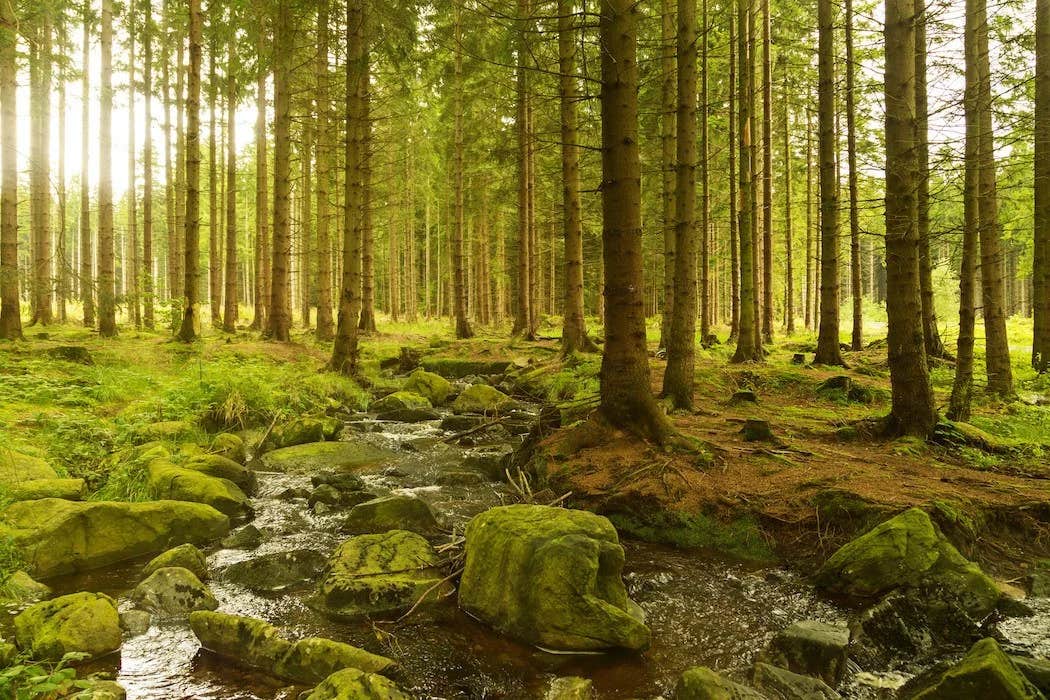Gamechanging discovery makes forests 70% more effective at sucking carbon from the air
In the ongoing battle against climate change and the preservation of biodiversity, reforestation efforts have emerged as a crucial strategy.

[Nov. 11, 2023: Staff Writer, The Brighter Side of News]
In the ongoing battle against climate change and the preservation of biodiversity, reforestation efforts have emerged as a crucial strategy. (Credit: Creative Commons)
In the ongoing battle against climate change and the preservation of biodiversity, reforestation efforts have emerged as a crucial strategy. The act of replanting trees not only aids in mitigating the harmful effects of climate change but also contributes to the achievement of sustainable development goals.
A key aspect of reforestation that has gained significant attention in recent years is the restoration of mixed forests. These diverse ecosystems, comprising a variety of tree species, offer numerous advantages in terms of carbon storage, resilience, and supporting biodiversity.
Dr. Emily Warner, a postdoctoral researcher in ecology and biodiversity science at the Department of Biology, University of Oxford, emphasized the importance of diverse planted forests, stating, "Diverse planted forests store more carbon than monocultures – upwards of 70%."
Dr. Warner served as the first author of a groundbreaking study published in Frontiers in Forests and Global Change. The study sought to evaluate and compare the carbon stocks in mixed planted forests with those in commercial monocultures, shedding light on the potential benefits of diversifying forest ecosystems.
Related Stories
Species richness plays a pivotal role in determining the carbon storage potential of mixed forests. To reach their conclusions, the international team of scientists conducted an extensive analysis of studies published since 1975 that directly compared carbon storage in mixed and single-species forests.
They supplemented this data with previously unpublished information from a global network of tree diversity experiments. "We wanted to pull together and assess the existing evidence to determine whether forest diversification provides carbon storage benefits," Warner explained.
The range of species richness in the mixed planted forests under investigation varied from two to six species. The data revealed that four-species mixtures were the most effective carbon sinks. These mixtures consisted of diverse broadleaf trees commonly found across Europe. Even two-species mixes demonstrated superior aboveground carbon stocks compared to monocultures, storing up to 35% more carbon. However, forests comprised of six species did not show a clear advantage over monocultures.
Data representation for each moderator, including presence of nitrogen-fixer in the mixed plantation. (CREDIT: Frontiers in Forests and Global Change)
The research findings clearly highlight the positive correlation between forest diversification and carbon storage. In fact, aboveground carbon stocks in mixed forests were found to be a remarkable 70% higher than the average monoculture. Additionally, mixed forests surpassed commercial monocultures, which are often composed of high-yielding species, with a 77% higher carbon stock.
Dr. Susan Cook-Patton, a senior forest restoration scientist at The Nature Conservancy and a collaborator on the study, emphasized the significance of these findings for future forest management strategies. She stated, "As momentum for tree planting grows, our study highlights that mixed species plantations would increase carbon storage alongside other benefits of diversifying planted forests." Forest managers now have a clear incentive to consider diversifying newly planted forests.
The geographic distribution of study sites. Points are proportional to the number of independent sites in that location (where sites are spatially separate at a distance that would not be discernible at this map scale). (CREDIT: Frontiers in Forests and Global Change)
While the study underscores the considerable potential of mixed forests to sequester carbon and enhance biodiversity, the researchers were quick to acknowledge its limitations. One notable constraint was the limited availability of studies that directly compared mixed and monoculture forests, particularly those from older forests with higher levels of tree diversity. Nevertheless, the study serves as a compelling starting point for further research and action in the field.
Dr. Warner stressed the need for continued investigation into the carbon storage benefits of forest diversification, taking into account various factors such as location, species composition, and forest age. The urgency of this task cannot be overstated, as we seek to harness the full potential of mixed forests as allies in our battle against climate change and biodiversity loss.
The effect of diversification of planted forests on aboveground carbon stocks relative to the average of associated monocultures, the best associated monoculture, and monocultures of commercial species, using all comparisons and subset by level of species richness. (CREDIT: Frontiers in Forests and Global Change)
The study's findings provide a compelling argument for the adoption of mixed-species reforestation efforts. As we confront the looming threats of climate change and strive to protect our planet's precious biodiversity, diverse planted forests emerge as a potent weapon in our arsenal.
By choosing to diversify our forests, we not only enhance their capacity for carbon storage but also bolster their resilience in the face of environmental challenges. The journey towards a sustainable future demands the incorporation of mixed forests into our reforestation strategies, ensuring a healthier planet for generations to come.
For more science and technology news stories check out our New Discoveries section at The Brighter Side of News.
Note: Materials provided above by The Brighter Side of News. Content may be edited for style and length.
Like these kind of feel good stories? Get the Brighter Side of News' newsletter.
Joseph Shavit
Head Science News Writer | Communicating Innovation & Discovery
Based in Los Angeles, Joseph Shavit is an accomplished science journalist, head science news writer and co-founder at The Brighter Side of News, where he translates cutting-edge discoveries into compelling stories for a broad audience. With a strong background spanning science, business, product management, media leadership, and entrepreneurship, Joseph brings a unique perspective to science communication. His expertise allows him to uncover the intersection of technological advancements and market potential, shedding light on how groundbreaking research evolves into transformative products and industries.



